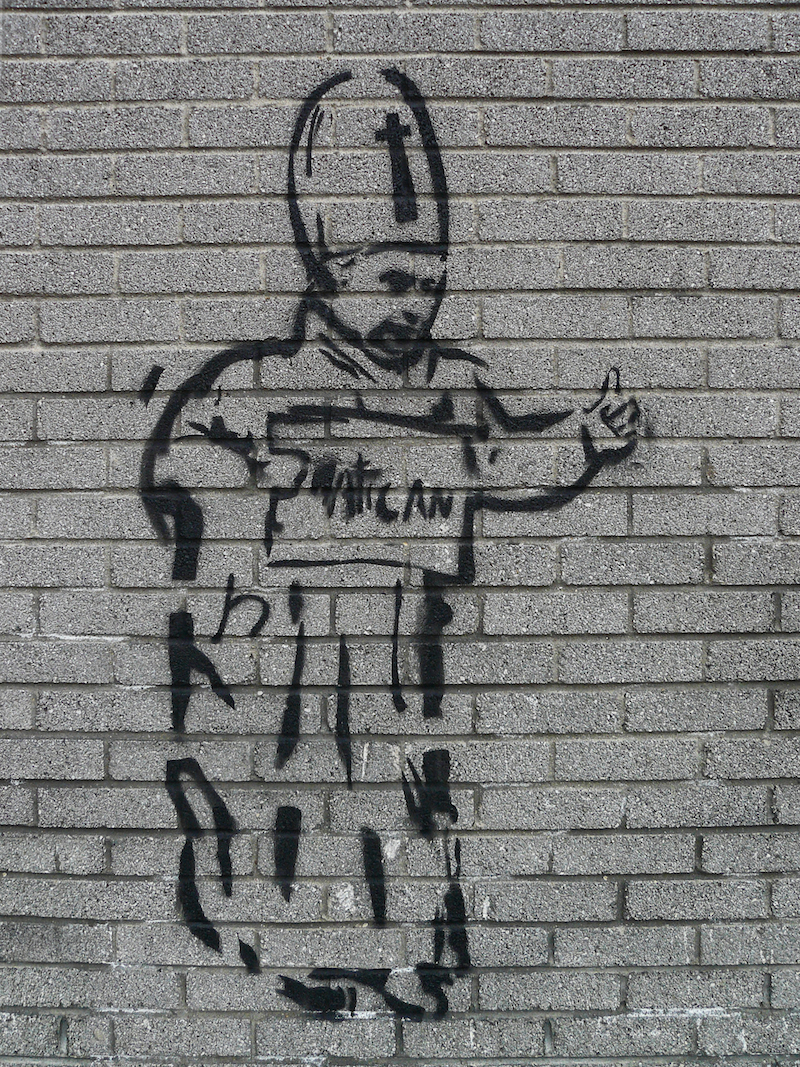
St. Jame’s Gate Brewery is home to the dark, creamy nectar known as Guinness. During a recent trip to Dublin, Ireland, the location of this famed brewery, I noticed a stenciled rendition of what appeared to be the Pope on one of the complex’s outer walls. According to the small sign the bishop held, he was looking for a lift to his headquarters in Italy. As whimsical as this may be, amid the confluence of pop-art and religious iconography, and in a country that is mostly Catholic, one might entertain the observations of street artist Arofish regarding illicit street art (from the 2007 film Bomb It): it is shocking to see artwork on the sides of public buildings, but “a lot of the work does lose its power and its potency when it’s just not illegal.” Thus, observers might be left asking themselves: can any such power or potency be discerned in this papal representation? And, more generally, is religious iconography inherently more powerful and potent when it is illicit?


